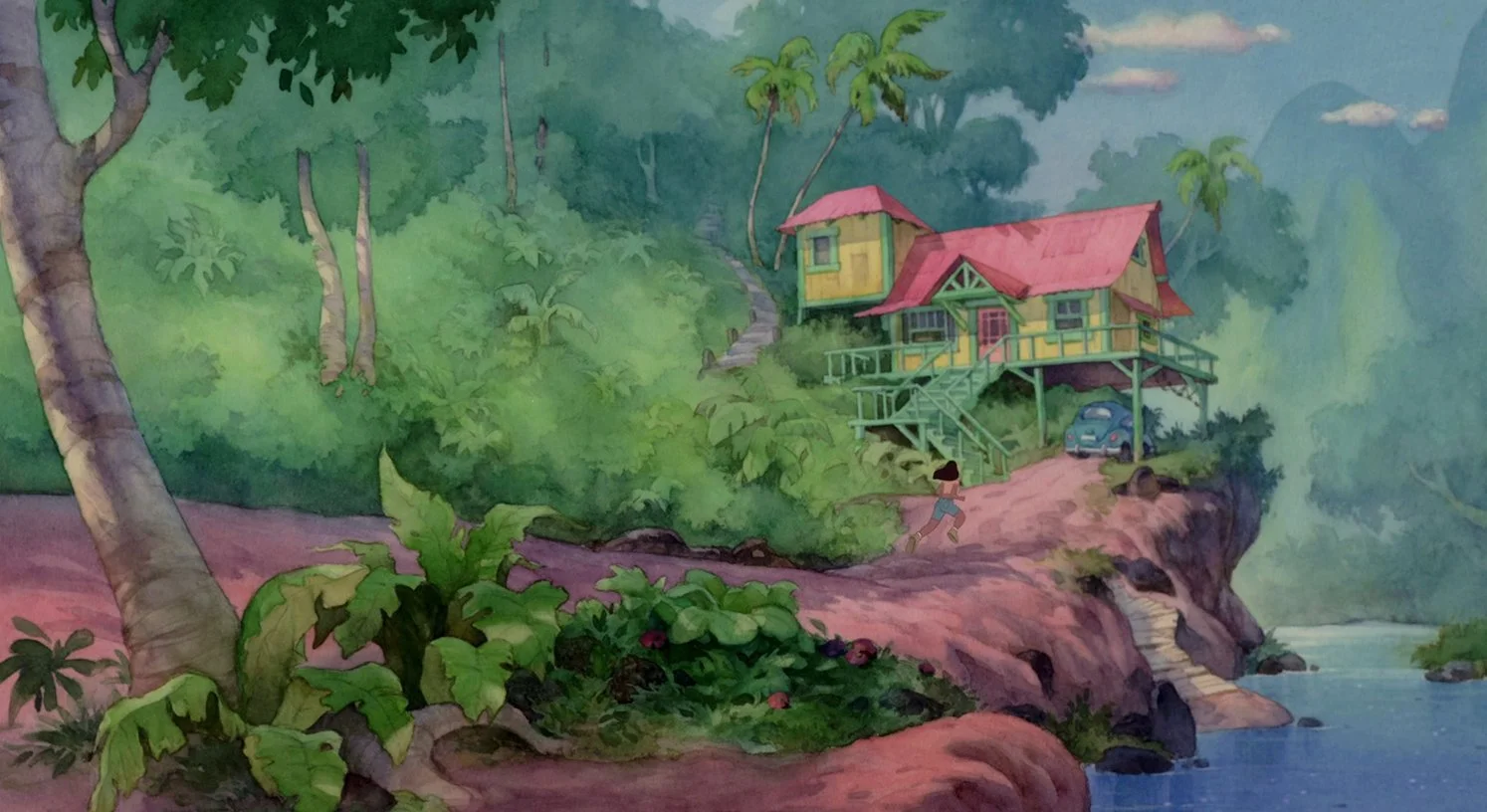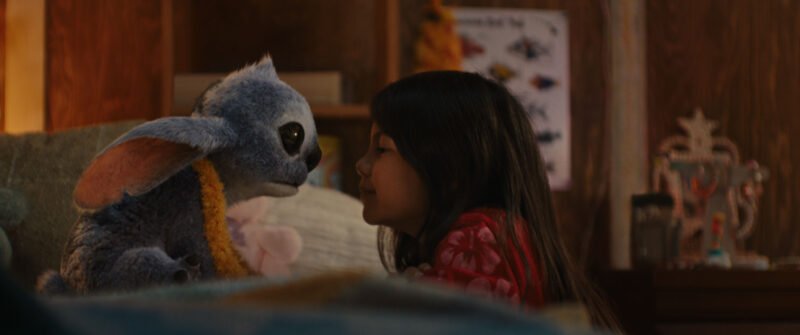Lilo & Stitch
Fleischer Camp, D. (Director). (2025). Lilo & Stitch [Film]. Walt Disney Pictures; Rideback; distributed by Walt Disney Studios Motion Pictures.This month, I’d like to do something a little different for journal club. Instead of discussing the latest research paper, I want to reflect on a piece of pop culture that’s long had a place in my heart: the movie Lilo & Stitch.
The original film was released when I was ten years old, and I loved it—although I was initially frightened by the alien storyline. As the story unfolded, however, I was captivated by the tale of a quirky little girl being raised by her older sister in regional Hawai’i. While it had the classical Disney themes of love, loss, and family, Lilo & Stitch also explored deeper and more complex social themes: child protection, foster care, cultural identity, and systemic discrimination.
It was also simply beautiful—visually and emotionally. The watercolour animation brought out the natural beauty of Hawai’i in a way I hadn’t seen before. The music, particularly the traditional Hawaiian songs, still gives me chills. They evoke not just the storyline but the history, culture, and strength of a people who, like many others around the world, have survived and adapted in the face of colonisation and displacement.
At ten, it felt profound to see a film that wasn’t about magic or princesses or whitewashed fairytales. Instead, it told a story rooted in lived experience, identity, and the powerful, sometimes painful, meaning of ohana—family. As the film reminds us, “Ohana means family. Family means nobody gets left behind… or forgotten.”
Fast forward to today—I’m 32, watching the premiere of the live-action remake in Gold Class—and crying more than I did the first time. The remake is beautifully done, and I want to share some reflections and messages that stood out to me.
One scene that stood out is when one of the girls tells Lilo, “It’s not a friendship bracelet if you don’t have any friends.” Oof. Kids can be cruel. Lilo is mocked for trying to make a friendship bracelet out of garbage while the other girls wear shiny, name-beaded ones. It’s not just bullying—it’s a depiction of classism and exclusion. Lilo is poor and different, and she knows it. Her social rejection reinforces her “bad” behaviour. When she retaliates by pushing a bully off the stage, I laughed a little—“Good on her,” I thought.
Later, we hear the parents of the other kids talking to a teacher: “She causes a lot of trouble… she’s just not a good fit.” It’s the same message, only sanitised. The film cleverly demonstrates how adult language repackages the same exclusionary attitudes, making systemic discrimination appear more palatable.
One of my favourite moments is when Lilo roleplays as a psychiatrist. She notes that Stitch’s “bad levels” are very high and wonders if it’s because he doesn’t have a family. She compares this to her own situation—grieving parents who loved her, and the hole their absence left behind. Stitch’s chaos mirrors Lilo’s own internal struggle. This is attachment theory 101.
In another poignant moment, Lilo nearly drowns because Stitch—despite being super strong on land—is useless in water. It’s a subtle but important lesson in swim safety for kids, and how rescuing others without the right support can lead to tragedy.
A particularly emotional scene is when Nani is told she may need to relinquish custody of Lilo. The social worker in this version is played by the incredible Tia Carrere—a proud Hawaiian of Filipino descent who originally voiced Nani in the 2002 version. Her performance in the remake is haunting, and there’s an authenticity in her portrayal that comes from knowing the pain of the character she once voiced. She embodies both strength and sorrow—someone who understands the cultural, emotional, and personal weight of this moment. And in true Hawaiian fashion, the scene centres not on goodbye, but on aloha—a word that means hello, goodbye, and “until we meet again.”
Lilo and Nani later share memories of a family camping trip. Lilo remembers it fondly; Nani remembers it as the time the house was fumigated and they had no choice but to sleep outside. This highlights how memory is filtered through emotional context—how children find joy and imagination even in hardship, while adults burdened with responsibility often see only struggle.
When things fall apart, Stitch voluntarily returns to his cage—the place where he was first adopted. Despite how awful it was, it was familiar. This moment is deeply human. When life becomes overwhelming or unsafe, we often return to the last place we felt secure, even if it wasn’t ideal. Again, attachment theory 101.
Lilo later says to Stitch, “You’re not bad. We just do bad things sometimes.” It’s a beautiful, compassionate reflection of human behaviour. Stitch later says of his chosen family: “Not perfect. But still good.” Meanwhile, the villain—the one alien who despises humans—sums us up perfectly: “Humans are so attached. Caring makes people make stupid decisions.” And yet, it’s this same attachment that makes us human. Our capacity to care is what gives life meaning.
In one of the most powerful scenes, Nani’s cultural aunty confronts a CIA agent who refuses to cooperate with the family: “I took an oath to the American people,” he says. She replies, “Who do you think we are?!” It’s a searing moment, calling out the historical and present-day discrimination faced by Native Hawaiians—treated as second-class citizens in their own land. As a person of colour in a predominantly white country, that moment really struck me.
The film ends with Lilo being taken away by the alien Grand Councilwoman—another woman in power, notably. Stitch pleads her to stay, saying that he’s found a family—“small, and broken, but still good.” The film introduces the concept of kuleana—a Hawaiian word that encompasses rights, responsibility, and privilege. Lilo’s aunty affirms that even as a neighbour, it is her kuleana to care for Lilo. But even more powerful is her reminder to Nani: it is also her kuleana to look after herself. This was a change from the original film, and a welcome one—placing carer wellbeing at the heart of family wellbeing.
In all, the film gave me a Hawaiian rollercoaster of emotions. I laughed, I cried, and I reflected. I’d strongly encourage everyone—especially those of us in psychiatry or healthcare—to revisit both the original and the remake. Think about your own ohana. And clinically, remember: no patient, family, or community should ever be left behind, or forgotten.



